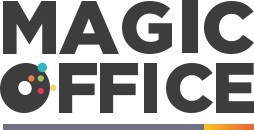
Understanding the Importance of Quality Checks
Why Quality Checks are Essential
In the rapidly evolving business environment, ensuring quality is no longer an option but a necessity. Quality checks play a crucial role in maintaining the standards of any product or service provided by a company. They involve systematic inspection workflows that guarantee the effectiveness of business processes. A robust quality management system can aid in identifying and rectifying issues before they escalate into significant problems, thereby safeguarding the reputation and efficiency of the organization. The Central Elements of Quality Checks- Workflow Analysis: By scrutinizing business processes, companies can pinpoint where inefficiencies exist. Implementing effective workflow management can refine these processes, enhancing overall workflow stability.
- Quality Assurance Systems: The integration of quality assurance into the management system ensures that test cases are not only executed but also evaluated for thoroughness and relevance. With rigorous testing workflows, a higher consistency in output can be achieved.
- Data-Driven Insights: Quality checks are heavily reliant on data and test samples obtained from real-time scenarios. This data provides insights that drive continuous improvement in quality control processes.
- Inspection Workflows: Regular inspections and workflow testing help companies maintain a high level of quality. These inspections ensure that all standards are upheld, significantly reducing the chance of defective products reaching the customer.
Key Challenges in Implementing Quality Check Workflows
Facing the Hurdles: Overcoming Common Barriers
Implementing quality check workflows presents various challenges that organizations need to address effectively to maintain high standards. Recognizing these challenges is crucial for any quality assurance initiative.
- Workflow Stability: Ensuring the stability of workflows can be difficult, especially when dealing with complex business processes. Variability in process quality can lead to inconsistent outputs, affecting the overall efficiency of the operation.
- Time and Resource Management: Balancing time allocation for quality control versus other operational tasks is a common issue. Efficient workflow management can be hindered by limited team resources and inadequate management systems.
- Data Accuracy and Control: Ensuring precise data collection and analysis is vital. Errors in workflow testing and unreliable test execution can misinform decisions, leading to suboptimal outcomes.
- Technology Integration: While technology can streamline inspection workflows and quality checks, ineffective integration of tools can create more complications. Compatibility issues and a lack of skilled team members may cause significant disruptions.
- Training in Quality Management: Inadequate training leads to insufficient understanding of workflow analysis and regression testing. New processes demand new skills, and without proper development, the testing workflow suffers.
Overcoming these challenges is essential and can be achieved by crafting effective quality plans. For insights on developing such plans, particularly in specific sectors, consider exploring approaches tailored for insurance firms.
Best Practices for Effective Quality Check Workflows
Optimizing Quality Checks Through Best Practices
Optimizing quality check workflows is essential for improving the efficiency and effectiveness of business processes. By adopting best practices, teams can enhance their workflow management systems and address various quality assurance challenges.- Establish a Clear Workflow: Develop a structured approach that defines each step of the quality check process, from initial data collection to final assessment. A clear workflow ensures that team members understand their roles, reducing the likelihood of errors and increasing efficiency.
- Leverage Data and Analytics: Implement data-driven decision-making to enhance quality assurance efforts. This involves analyzing workflow data to identify patterns and issues, enabling teams to make informed adjustments and improvements in real time.
- Conduct Regular Workflow Testing: Periodically test the consistency and reliability of your workflows through test cases and regression testing. This allows for early identification of workflow stability issues and helps maintain high standards of process quality.
- Utilize Advanced Tools: Equip your team with tools designed for quality control and workflow analysis. Software testing and testing workflow tools can streamline test execution, ensuring processes run smoothly and efficiently.
- Implement a Robust Inspection Workflow: Regular inspections can unveil hidden issues and promote a culture of continuous improvement within the organization. An efficient inspection workflow prevents defects and enhances product quality.
Technology's Role in Streamlining Quality Checks
Integrating Technology for Optimized Workflows
In the modern business landscape, technology plays a pivotal role in refining quality control processes. Leveraging the right tools can significantly enhance workflow stability and ensure that each test case is scrutinized with precision. The key is to establish a management system where automation supports the inspection workflow, thereby reducing human error and improving efficiency. The incorporation of software testing tools and automation in quality management allows teams to conduct workflow testing more efficiently. This technology aids team members in executing regression testing and processing real-time data to identify underlying issues. With a robust technology framework, the system can streamline test execution while maintaining process quality.Utilizing Advanced Tools for Better Precision
Exploring advanced testing tools is essential for quality assurance. These tools offer capabilities that enable quality check teams to perform automated testing across multiple test cases simultaneously. As a result, testing workflows become more coordinated, providing better assurance that the business processes meet established standards. Effective workflow management requires continuous workflow analysis. This means continuously assessing and refining the existing inspection workflow based on data-driven insights from past test outputs. By addressing key pain points and improving these workflows, organizations can better control the overall quality of their deliverables.Addressing Common Quality Issues Through Enhanced Systems
Technology allows for a more systematic approach to addressing quality issues. With the help of integrated systems, quality teams can keep track of testing outcomes and control quality with higher accuracy. This mitigation of defects in the initial phases of the process saves time and resources while reinforcing the final product's integrity. Investing in a sound quality management system that supports data collection and analysis is beneficial for predicting future trends. These systems allow for the continuous identification of trends and patterns, ultimately informing strategies for future quality assurance. Through efficient workflow management and automation, businesses can achieve optimal process quality and smooth testing workflows.Training and Development for Quality Assurance
Empowering Team Members Through Training Initiatives
Developing a knowledgeable team is vital for maintaining high-quality standards in any organization. Training plays a fundamental role in enhancing the skills of team members, enabling them to effectively identify and address issues in quality assurance workflows. Ensuring that all involved personnel are well-versed in the workflow testing and quality management processes is paramount.- Regular Training Sessions: Conduct periodic training sessions focusing on specific aspects of quality control and assurance. This aids in keeping the team updated with the latest testing workflow methods and tools essential for efficient outcomes.
- Customizing Training Modules: Tailor training content to the specific needs of the organization. Focus on areas where team members may face challenges such as understanding test cases, managing business processes, or using quality management systems.
- Emphasizing Practical Learning: Incorporate real-time sample tests into the training. This hands-on approach is crucial for familiarizing team members with inspection workflows and test execution strategies effectively.
- Implementing Feedback Mechanisms: Establish a feedback system that allows team members to voice concerns and suggest improvements. This promotes an interactive learning environment and ensures training sessions evolve with the needs of the team.
Measuring Success: Metrics and Feedback
Evaluating Success: Metrics and Real-Time Feedback
In order to ascertain the efficacy of quality check processes, consistent measurement and feedback are crucial. This evaluation hinges on deploying appropriate metrics that resonate with the specific workflow and organizational goals.
Quality assurance teams should focus on:
- Workflow Analysis: Regularly analyzing the workflow helps in understanding the bottlenecks and streamlining processes for better time management and workflow management.
- Data-Driven Decisions: Collecting data through thorough testing, including regression testing and test execution, provides actionable insights. These insights will feed into enhancing the quality control mechanisms.
- Real-Time Feedback: Implementing systems that allow for real-time monitoring and feedback ensures issues are addressed promptly, maintaining process quality and overall efficiency.
- Monitoring Test Cases: Regularly evaluating test cases for accuracy and relevance can prepare the team for unexpected scenarios and maintain workflow stability.
It's imperative for team members to consistently collaborate and share feedback to improve overall testing workflows. Incorporating a robust quality management system aids in not only identifying current issues but also in fortifying the workflow against potential future challenges.
For an Arabian Emirate company, honing in on these metrics ensures a higher caliber of quality assurance that aligns with their unique business processes and management goals, fostering a conducive environment for growth.












